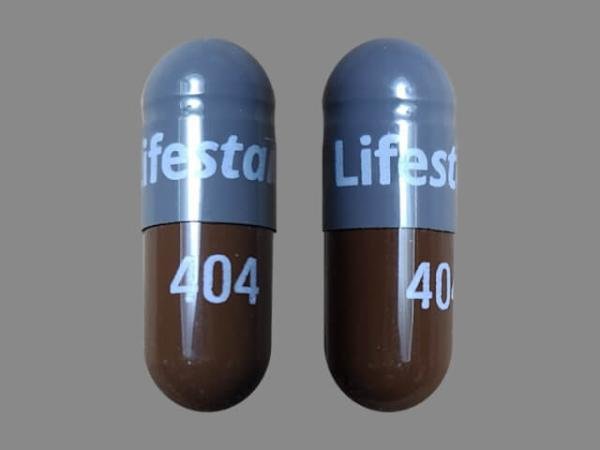Nitrofurantoin Disease Interactions
There are 6 disease interactions with nitrofurantoin.
Antibiotics (applies to nitrofurantoin) colitis
Major Potential Hazard, Moderate plausibility. Applicable conditions: Colitis/Enteritis (Noninfectious)
Clostridioides difficile-associated diarrhea (CDAD), formerly pseudomembranous colitis, has been reported with almost all antibacterial drugs and may range from mild diarrhea to fatal colitis. The most common culprits include clindamycin and lincomycin. Antibacterial therapy alters the normal flora of the colon, leading to overgrowth of C difficile, whose toxins A and B contribute to CDAD development. Morbidity and mortality are increased with hypertoxin-producing strains of C difficile; these infections can be resistant to antimicrobial therapy and may require colectomy. CDAD must be considered in all patients who present with diarrhea after antibacterial use. Since CDAD has been reported to occur more than 2 months after antibacterial use, careful medical history is necessary. Therapy with broad-spectrum antibacterials and other agents with significant antibacterial activity should be administered cautiously in patients with history of gastrointestinal disease, particularly colitis; pseudomembranous colitis (generally characterized by severe, persistent diarrhea and severe abdominal cramps, and sometimes associated with the passage of blood and mucus), if it occurs, may be more severe in these patients and may be associated with flares in underlying disease activity. Antibacterial drugs not directed against C difficile may need to be stopped if CDAD is suspected or confirmed. Appropriate fluid and electrolyte management, protein supplementation, antibacterial treatment of C difficile, and surgical evaluation should be started as clinically indicated.
Nitrofurantoin (applies to nitrofurantoin) G-6-PD deficiency
Major Potential Hazard, High plausibility.
Hemolytic anemia has been reported in patients treated with nitrofurantoin, primarily in patients with glucose-6-phosphate dehydrogenase (G-6-PD) deficiency. Therapy with nitrofurantoin should be avoided or administered cautiously in patients with G-6-PD deficiency. The development of hemolysis is an indication for withdrawal of nitrofurantoin therapy. Hemolysis ceases when the drug is withdrawn.
Nitrofurantoin (applies to nitrofurantoin) hepatotoxicity
Major Potential Hazard, Moderate plausibility. Applicable conditions: Liver Disease
The use of nitrofurantoin has rarely been associated with hepatotoxicity, including hepatitis, cholestatic jaundice, chronic active hepatitis, and hepatic necrosis. Nitrofurantoin macrocrystals capsules are contraindicated in patients with a previous history of cholestatic jaundice/hepatic dysfunction associated with nitrofurantoin. Most acute reactions are self-limiting and resolve spontaneously, although fatalities have been reported. Therapy with nitrofurantoin should be administered cautiously in patients with liver disease. Periodic monitoring of liver function is recommended during prolonged therapy. The drug should be withdrawn immediately if hepatitis or liver damage occurs and is felt to be drug-related. Since nitrofurantoin is partially metabolized by the liver, a reduced dosage may also be necessary to prevent toxicity.
Nitrofurantoin (applies to nitrofurantoin) renal dysfunction
Major Potential Hazard, High plausibility.
The use of nitrofurantoin is contraindicated in patients with anuria, oliguria, or significant renal impairment (CrCl < 60 mL/min). Urinary concentration of the drug is likely to be inadequate in these patients, increasing the risk of therapeutic failure. Since nitrofurantoin is eliminated by the kidney, risk of toxicity may also be increased.
Nitrofurantoin (applies to nitrofurantoin) peripheral neuropathy
Moderate Potential Hazard, Moderate plausibility. Applicable conditions: Diabetes Mellitus, Anemia Associated with Vitamin B12 Deficiency, Folic Acid/Cyanocobalamin Deficiency, Electrolyte Abnormalities, Hypocalcemia
The use of nitrofurantoin has occasionally been associated with the development of peripheral neuropathy, which may be severe and irreversible. Patients at risk include the elderly and those with renal impairment, anemia, diabetes mellitus, electrolyte imbalance, vitamin B12 deficiency, diabetes, and/or debilitating diseases. Therapy with nitrofurantoin should be administered cautiously in patients with one or more risk factors and/or preexisting peripheral neuropathy. Periodic monitoring of renal function is recommended during prolonged therapy.
Nitrofurantoin (applies to nitrofurantoin) respiratory
Moderate Potential Hazard, Moderate plausibility. Applicable conditions: Pulmonary Impairment
Chronic pulmonary reactions, generally in patients who have received continuous treatment for 6 months or longer have been reported with the use of nitrofurantoin. Caution is recommended when prescribing this agent to patients with pulmonary dysfunction.
Switch to professional interaction data
Nitrofurantoin drug interactions
There are 226 drug interactions with nitrofurantoin.
More about nitrofurantoin
- nitrofurantoin consumer information
- Check interactions
- Compare alternatives
- Pricing & coupons
- Reviews (1,895)
- Drug images
- Side effects
- Dosage information
- Patient tips
- During pregnancy
- Support group
- Drug class: urinary anti-infectives
- Breastfeeding
- En español
Related treatment guides
Drug Interaction Classification
| Highly clinically significant. Avoid combinations; the risk of the interaction outweighs the benefit. | |
| Moderately clinically significant. Usually avoid combinations; use it only under special circumstances. | |
| Minimally clinically significant. Minimize risk; assess risk and consider an alternative drug, take steps to circumvent the interaction risk and/or institute a monitoring plan. | |
| No interaction information available. |
See also:
Further information
Always consult your healthcare provider to ensure the information displayed on this page applies to your personal circumstances.


